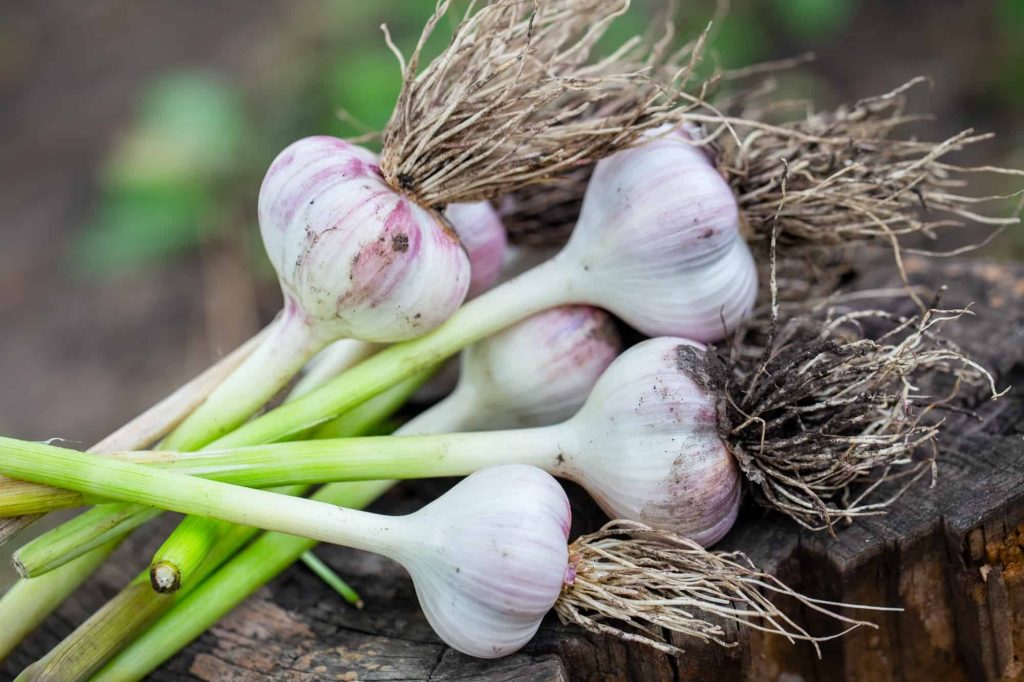Garlic is a good ingredient for dishes. It improves the flavor and gives it a good scent. Garlic comes highly recommended for treating certain ailments. Along with its many benefits accompanies the interest to have it in the garden.
Planting garlic is not a hard nut to crack. If you can get the trick to have a successful garlic plant, you will have access to a lot of health benefits with no costs attached. Garlic gives the immune system a boost and helps to regulate blood pressure. Incorporating it into your diet is tantamount to signing a will with good health.
Some of the best companion plants to grow with garlic are dill, tomatoes, tarragon, roses, carrot, cabbage, fruit trees, kale, broccoli, and potatoes. Garlic has a pungent smell that can help repel some pests in the garden. Do not plant garlic near plants such as beans, carrots, other alliums, asparagus, and parsley, it will stunt their growth.
Garlic doesn’t contribute to human health alone. It also aids the growth of numerous plants. It is advisable to have this plant in your garden if you want to spend less on pest control. Garlic will help deter dangerous pests from destroying your plant. It doesn’t take up so much space in the garden and protects your plants from fungal diseases.
The benefit garlic offers is probably whetting your appetite. Do you want to learn more? Keep your eyes peeled for the companion plants.
7 Best Garlic Companion Plants
Companion Planting helps you spend less on the maintenance of your plant. When Companion Planting is practiced in your garden, pests are repelled, the plant receives a flavor boost, the yield of the plant is increased. Certain plants make other plants perform this way.
1. Tomato
Tomato plants are delicate therefore they require monitoring. The spider mite is an example of a pest that can destroy the yield of your tomato. However, garlic which is a natural pest repellent assist in keeping pests at bay thus improving its flavor. The pungent scent of garlic is released into the atmosphere and is responsible for keeping these dangerous insects far away.
2. Cabbage
This is one of the garden plants that attract varieties of pests. Pests like cabbage maggots, moths, Loopers, worms can cause damage to the leaves of your plant. This should not be a problem for garlic as it will take care of these pests by deterring them.
3. Potatoes
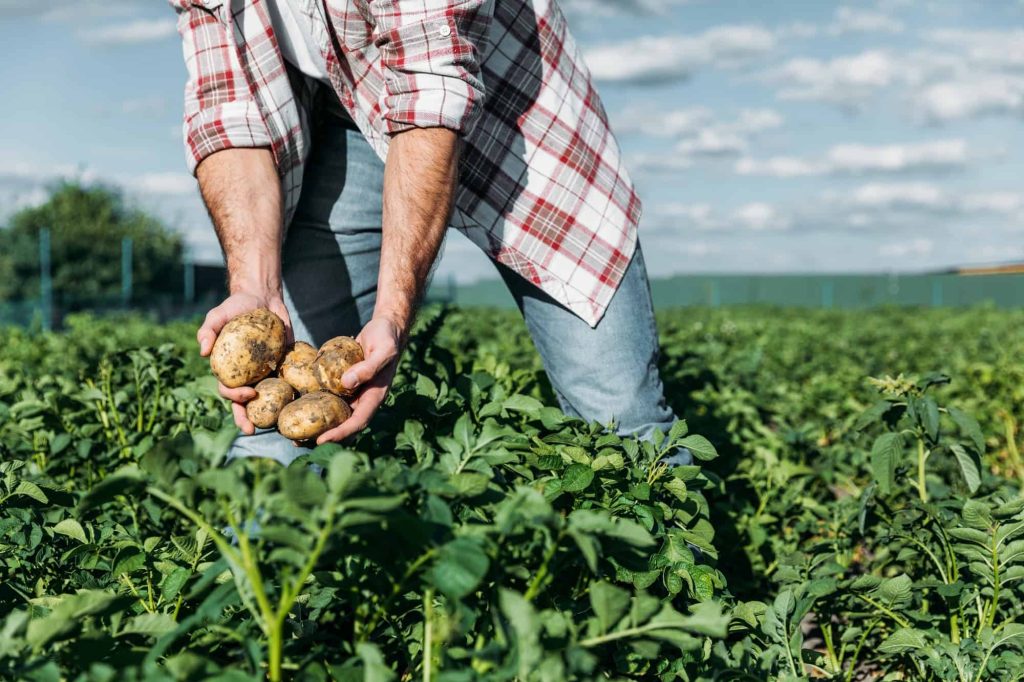
Potatoes should never be planted alone. There are many plants it can benefit from and garlic is an example of a beneficial plant. Potatoes are vulnerable to blight diseases (fungal) and insect pests. Sulfur is released from the roots of garlic. This is the ‘natural fungicide’ used to get rid of fungal diseases and some pests like the Japanese beetle.
4. Roses
Garlic is also referred to as a “stinking rose” because of the pungent scent it emits. Some flowers also release scents that keep pests far away but Rose is vulnerable to aphids. Aphids can disfigure the petals of your flower but planting garlic will help put aphids in their place. Garlic also assists other flowers like nasturtium to remain pest-free.
5. Tarragon
Garlic is known to contribute largely to the growth of other plants by helping them repel pests and keeping them free of diseases. Hence, it is used as a companion for other plants. Planting cloves with tarragon changes this fact as garlic is at the receiving end. Tarragon aids the growth of garlic cloves. If you want to have a better yield of cloves, grow it with some tarragon.
6. Dill
This plant is found on the list of companion plants for other crops. Its relationship with garlic is symbiotic as garlic acts as a source of natural repellent while dill on the other hand improves the flavor of your cloves.
7. Carrot
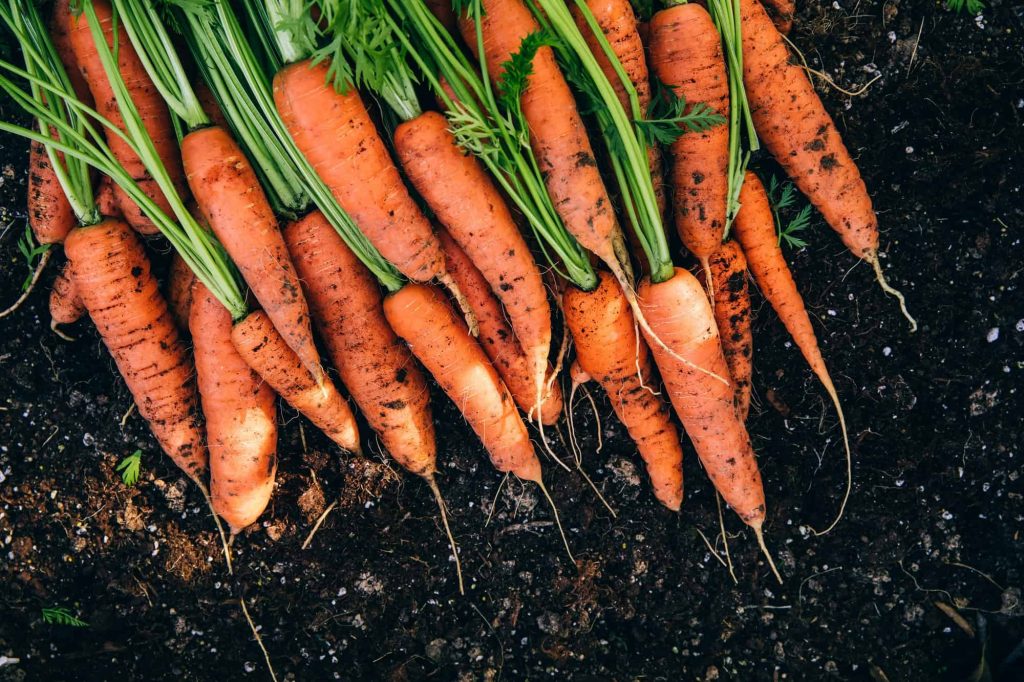
Don’t forget that garlic grows best in cool climates. Plants that have similar growing requirements are the best companions to plant together. Carrots will thrive at a cool temperature. Planting garlic and carrots during Fall will help both plants play a symbiotic role. Carrot flies, a major pest of carrots will be kept in their place by cloves of garlic while carrots will also assist in deterring the major pests of garlic.
What Not To Plant With Garlic
Allium plants can hinder the growth of other plants if one isn’t aware of the plants to avoid planting them with. Not all plants will grow well if grow well with garlic. These plants include;
1. Beans
Beans and garlic go well together in your dish but never in the garden. Surprisingly, garlic will affect the growth of your beans plant. This includes all species of beans (bush beans, pole beans).
The best thing to do is plant beans on your patch before you plant garlic. By then, the soil will be enriched with nitrogen and more suitable for planting.
2. Asparagus
Asparagus and garlic can’t cohabitate in the same garden. Their flavors will mix and that will change the taste of the garlic. The asparagus plant grows every year and can be invasive. Its root grows deep into the floor. Planting garlic with asparagus will disrupt its root system.
3. Sage
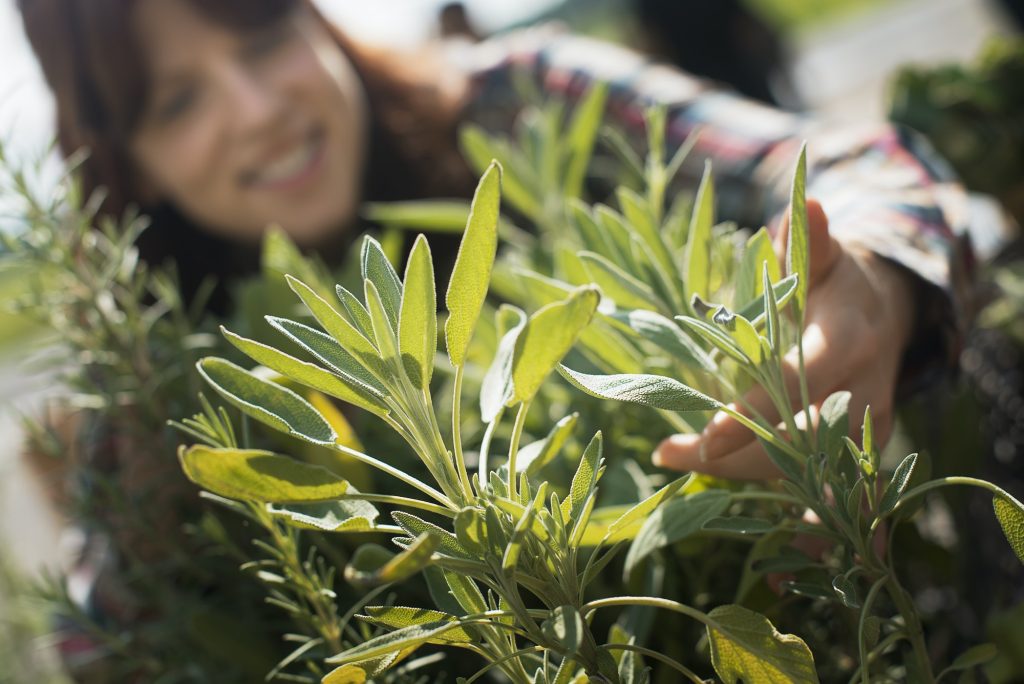
Sage should not be found with plants that can affect its roots’ growth. Sage is a woody plant and needs to be grown with a plant that possesses soft roots.
4. Parsley
Parsley is a nutrient-hungry plant. Garlic also competes for nutrients to some point. Having both plants on the same soil is setting up your companion planting for disaster. Never situate both plants close to each other as they can affect each other’s growth.
5. Strawberries
Research hasn’t confirmed if garlic will be of benefit to strawberries. It has been studied that having garlic close to strawberries can help it repel pests and protect it from fungal diseases.
Garlic was observed to reduce the yield of strawberries. That’s much worse than getting infested with pests.
6. Other Alliums
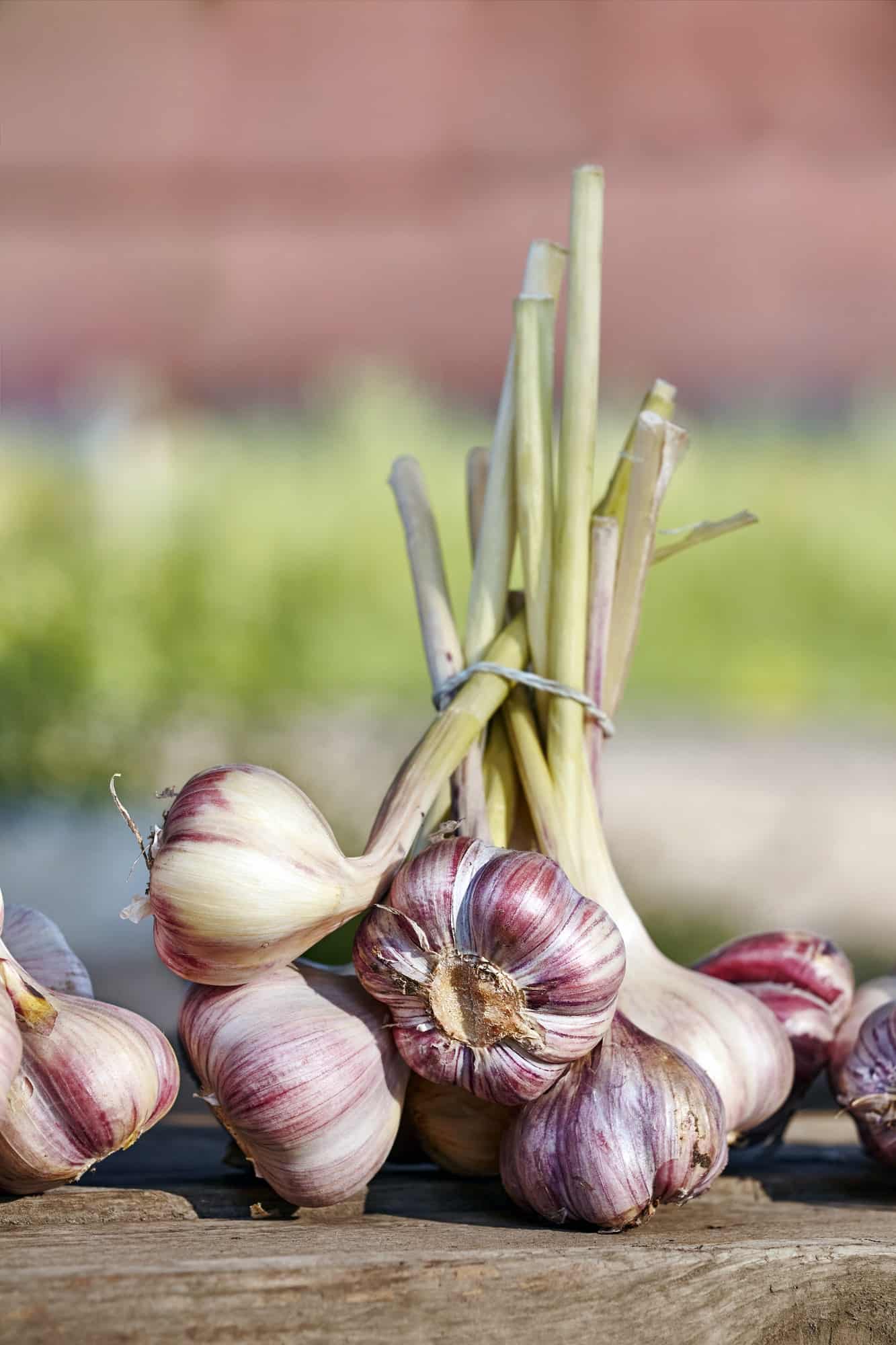
Avoid planting relatives of allium with it. Your harvest will result in a disaster. Just imagine onion maggots on both of your allium plants after you have made plans to sell them. The yield would have been destroyed, time would have been wasted, and you will eventually have to throw them away. Thus, cloves of garlic and other alliums should not be brought close together on the same patch.
Garlic Companion Planting Guide
Here are some tips for companion planting garlic in your garden.
- It is great to get a good area and rich soil for planting your garlic but planting a seed that won’t sprout well will bring your efforts to naught. Make sure to get your seeds from a reliable source and select a good environment to plant
- A depth of 1 inch is enough for your seed
- Garlic cloves grow best during cool climates. It will do best if you plant it in the fall season
- Garlic thrives best on well-drained soil
- To get the best of garlic, expose it to 6-8 hours of direct sunlight
- Plant your cloves on soil that hasn’t accommodated an allium plant
- Replenish the soil with fertilizer, compost, or manure
- Space your plants at least 4 inches apart
- Water your plant often
- Provide your cloves with mulch to conserve their moisture.
What should not be planted near garlic?
Although garlic is a pest repellent and has many companion plants, it should never be found close to some plants. Plants like Sage, beans, other allium plants, strawberries will affect the growth of garlic. If you want your garlic cloves to come out well. Avoid planting it with those plants listed above.
Is garlic a companion plant for tomatoes?
Garlic aids the growth of so many plants and is found on the list of companion plants for other crops. Tomato is subject to dangerous pests and the role of garlic when planted with it is to keep these pests at Bay using its pungent scent.
Can you plant peppers with garlic?
Peppers will have no negative effect on garlic and vice versa. Garlic and pepper will make a good blend in dishes and on the same soil too. Garlic will assist pepper in repelling pests.
Can garlic be planted near onions?
Do not let this thought cross your mind !. Allium plants don’t agree with each other in the same garden. They compete for space and nutrients thereby stunting their growth.
What should I plant before garlic?
Coffee thrives well on rich soil. Rich and fertile soil are recommended for garlic cultivation. The best crop to plant before growing garlic in your garden is Beans. Beans are a good source of compost when it decays and it helps replenish the soil with nitrogen and other essential nutrients.
Are coffee grounds good for garlic?
Coffee grounds are rich in soil nutrients. It is good to plant your garlic on a ground that has accommodated coffee plant provided it is not closely packed.
Can I plant garlic next to Basil?
Basil and garlic are good companions and will do well together on the same soil. Basil is among the list of favorite plants garlic loves to be planted with.
Can I plant lettuce with garlic?
Lettuce is susceptible to numerous pests, aphids being the major pest. Cloves of Garlic help to deter these pests and keep the lettuce leaves pest-free and in good shape.
Conclusion
Garlic is easy to plant. Though their growth can be hindered if planted with the wrong Companion plants.
Take note of its bad companions and keep them at bay. Planting garlic’s favorite plants with it result in a great harvest. Companion planting reduces costs on pest control. Likewise, planting garlic in your garden will help you control pest infestation.
More companion planting guides:
- Cucumber Companion Plants (What Not to Grow With Cucumbers)
- Radish Companion Plants (What Not to Grow Near Radishes)
- Eggplant Companion Plants (What Not To Grow Near Eggplants)
- Corn Companion Plants (What Not To Grow Near Corn)
- Nasturtium Companion Plants (What Not To Grow Near Nasturtiums)
- 10 Parsley Companion Plants (What Not to Grow Near Parsley)

